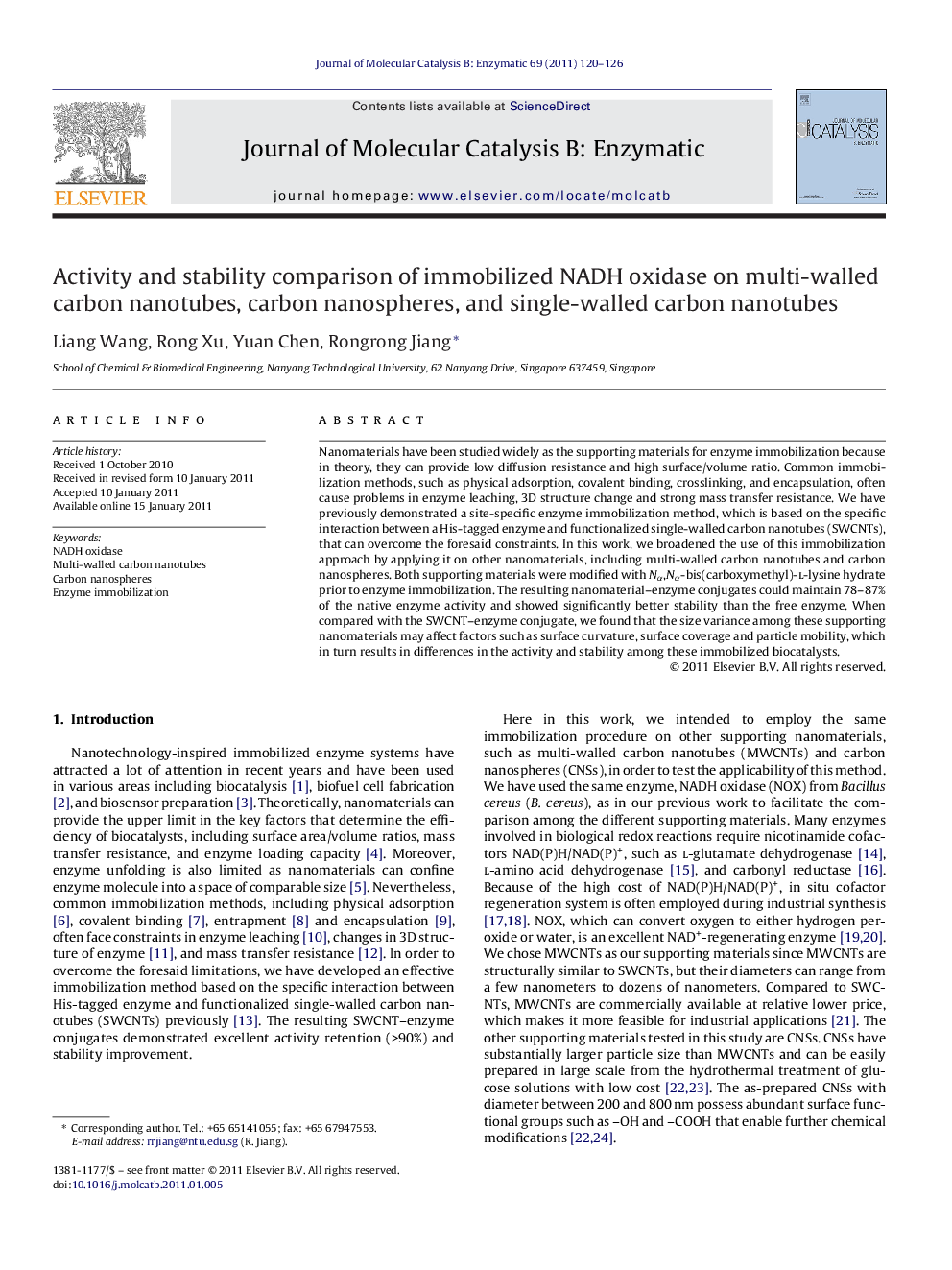| کد مقاله | کد نشریه | سال انتشار | مقاله انگلیسی | نسخه تمام متن |
|---|---|---|---|---|
| 70322 | 48822 | 2011 | 7 صفحه PDF | دانلود رایگان |

Nanomaterials have been studied widely as the supporting materials for enzyme immobilization because in theory, they can provide low diffusion resistance and high surface/volume ratio. Common immobilization methods, such as physical adsorption, covalent binding, crosslinking, and encapsulation, often cause problems in enzyme leaching, 3D structure change and strong mass transfer resistance. We have previously demonstrated a site-specific enzyme immobilization method, which is based on the specific interaction between a His-tagged enzyme and functionalized single-walled carbon nanotubes (SWCNTs), that can overcome the foresaid constraints. In this work, we broadened the use of this immobilization approach by applying it on other nanomaterials, including multi-walled carbon nanotubes and carbon nanospheres. Both supporting materials were modified with Nα,Nα-bis(carboxymethyl)-l-lysine hydrate prior to enzyme immobilization. The resulting nanomaterial–enzyme conjugates could maintain 78–87% of the native enzyme activity and showed significantly better stability than the free enzyme. When compared with the SWCNT–enzyme conjugate, we found that the size variance among these supporting nanomaterials may affect factors such as surface curvature, surface coverage and particle mobility, which in turn results in differences in the activity and stability among these immobilized biocatalysts.
Figure optionsDownload as PowerPoint slideResearch highlights
► We have broadened the use of a specific immobilization method, which has been demonstrated before with single-walled carbon nanotubes (SWCNTs), by applying it to multi-walled carbon nanotubes (MWCNTs) and carbon nanospheres (CNSs). Both nanoparticle–enzyme conjugates exhibited good enzyme activity retention (78–87%) and enhanced stability.
► By comparing SWCNT–enzyme, MWCNT–enzyme and CNS–enzyme conjugates, we found that the activity and stability of the immobilized enzymes could be influenced by the characteristics of the supporting materials, such as their surface area, size and surface curvature.
► Our MWCNT–enzyme conjugate showed much better activity retention (87%) than the reported covalently bound MWCNT–enzymes (24–56%).
► We used cell lysate, instead of pure enzyme, for the immobilization, which avoided the costly enzyme purification step.
Journal: Journal of Molecular Catalysis B: Enzymatic - Volume 69, Issues 3–4, May 2011, Pages 120–126